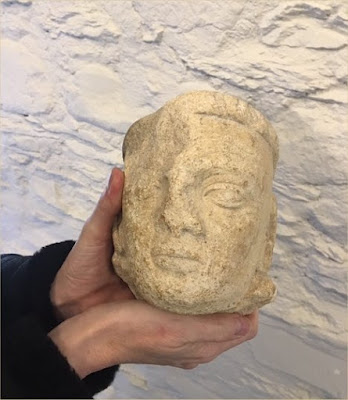A history and landscape weekend - with some book research thrown in!
I'm currently writing my fourth historical novel for Harlequin-Mills & Boon historical romance, which is the second in a duet of linked books. The first of these - The Warrior's Reluctant Wife - will be out in e-book and paperback in August 2023.
When I began that first book, I didn't intend to have a linked book at all, but as sometimes happens, there were two characters who refused to go away, even though I 'sent' them away early on in the book. I even had a book four waiting in the wings, but these characters kept poking their heads up, so eventually, of course, I had to give in and put the planned story aside and give book four to Llywelyn and Cristin.
After all, not only their characters were there waiting to be fleshed out, their home was too, hence a little trip this last weekend down south to the castle of Ystrad Meurig and the Cistercian Abbey of Ystrad Fflur. Shameful to say, this was my first visit to either!
 |
| Head of St Bernard, part of a white marble statue that adorned the Abbey |
I combined this recce with attending a history and landscape weekend course with the Ymddiriedolaeth Ystrad Fflur - Strata Florida Trust, which in itself was an eye opener and so inspiring. Led by Professors David Austin and Dafydd Johnston, who gave so generously of their time and expertise, wonderfully organized by Carys, and with a lovely mix of people - and cake too - I could have stayed a whole week, not just a weekend!
 |
| The beautiful west gate which somehow survived the dissolution |
From iron age burial grounds, to holy wells, to Welsh medieval poetry, as well as the history of the founding of the Abbey by the Lord Rhys to its demise at the dissolution and its passing into secular hands, it was a fascinating weekend. The course ended with a walk up along what had been a perimeter wall and the afon Glasffrwd river, to the leats and holy well, to see how the Abbey's sophisticated water system would have run.
 |
| The ancient holy well that may have been part of an earlier Christian religious site here |
I treated myself to a stay in a guest house and on the morning of the second day was able to visit Castell Ystrad Meurig, home of my two new characters. First built in the early 12th century as a Norman motte-and-bailey castle, it was easy to see why that site was chosen, as it has stunning and strategic views that stretch for many miles. It was retaken by the Lord Rhys in the Welsh resurgence of 1164, which is when my novel is set.
 |
| Surviving 14th century tiles from the nave |
Annoyingly, the battery on my phone ran out so I wasn't able to get any photos of the castle, but I hope you enjoy a few of the many photos I took around the Abbey. The one below is a tenth century burial slab that may mark the grave of Cadell ap Gruffudd, prince of Deheubarth and brother to the Lord Rhys, who retired to the monastery after he was grievously injured in an attack by a band of Norman and Flemish knights in 1155. He become a monk and died at Ystrad Fflur in 1179.
.JPG) |
| The possible grave of Prince Cadell ap Gruffudd |
 |
| 10th century slabs marking the graves of former abbots and monks |
Find out more about Ymddiriedolaeth Ystrad Fflur - Strata Florida Trust



Comments
Post a Comment